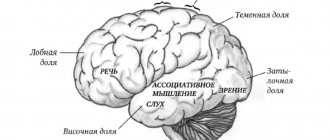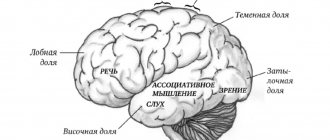Lecture No. 1. Psychology of communication
Man is unthinkable without people.
Goethe
Target:
Study the topic “Communication”. Expand the meaning of the concept of “communication”; consider types and levels of communication. Introduce students to various means of communication, reveal the techniques of non-verbal communication. Pay special attention to the mechanisms of interpersonal perception and understanding of people in the process of communication. Give an idea of the main phenomena of interpersonal communication; analyze the reasons leading to distortion of information in the process of people’s perception of each other. Develop skills in interpreting nonverbal means in communication. Develop the ability to better perceive and understand other people in the process of communication.
Plan:
1. The concept of communication.
2. Types and levels of communication.
3. Means of communication.
4. Mechanisms and effects of interpersonal perception.
Mechanisms of interpersonal perception
It is customary to distinguish two groups of mechanisms by which people perceive each other:
- interpersonal;
- group.
The basic or most common mechanisms of interpersonal perception are considered to be:
- Identification .
We are talking about a person’s ability to perceive another, while drawing analogies with himself. This is the most accessible way of understanding, which does not require any effort from the individual, since such an assessment often occurs at the level of the unconscious. - Empathy . The ability to enter into the position of another person and feel his emotional state, as well as experiences.
- Decentration . The ability to step back from what is happening in order to evaluate situations from the outside, while getting used to the role of an outside spectator, for whom each side is alien and there is no moment of bias. It is this mechanism that is considered the most preferable for knowing another person, since it does not imply bias.
- Social reflection. A person’s ability to imagine and comprehend the impression he leaves of himself in the process of interpersonal interaction.
At the same time, the “depth” of reflection depends on how significant the interlocutor appears in the eyes of a person. - Attraction . A form of perception based on obvious sympathy for another person. Sympathy can manifest itself at three levels: direct sympathy, friendship and love. Among the factors that stimulate attraction are geographic proximity, similarity of views, and external attractiveness.
- Casual attribution. The ability of a person to look for reasons for his own behavior, as well as the behavior of his interlocutor. The attribution mechanism is activated at the moment when one of the interlocutors does not have enough facts to create a portrait of the interaction partner.
Communication concept.
From the moment of his birth until the end of his life, a person is in the process of constant communication and interaction with other people. Statisticians in some countries have calculated that up to 70% of the time in the lives of most people is occupied by communication processes. In communication, we convey a variety of information to each other; exchange knowledge, opinions, beliefs; declare our goals and interests; We learn practical skills and abilities, as well as moral principles, rules of etiquette and traditions.
However, communication does not always proceed smoothly and successfully. Often we are faced with critical situations: someone did not understand us; we did not understand someone; We spoke to someone too harshly, rudely, although we did not want this. There is no person who has never experienced difficulties in the process of communication in his life. In private life, we have the right to choose those with whom we enjoy communicating, those who appeal to us. However, in the service we are obliged to communicate with those who are there, including people who are unsympathetic to us. In this situation, it is very important to be able to learn how to establish contact, since the success of professional activity depends on this skill. Numerous studies by psychologists have proven that there is a direct connection between the quality of communication and the effectiveness of any activity, i.e. almost everything depends on the ability to contact people
5 pages, 2482 words
Mechanisms of person’s perception by person and mutual understanding in the process of communication
... that is, how your communication partner sees you. Mechanisms of perception of a person by a person and mutual understanding in the process of communication The idea of another person is closely related to the level of one’s own self-awareness. Analysis of awareness...
— Do you think your future professional activity as a nurse (paramedic) somehow depends on your ability to communicate and achieve mutual understanding?
Even Avicenna, the great physician and thinker of the Middle Ages, spoke about three means of helping a sick person - “the knife, the grass and the word,” thereby emphasizing the importance of the human word, and in fact, the psychology of communication in healing from illness. Any activity is possible only if psychological contact and mutual understanding are established between people. However, we must remember that successful communication is achieved not only by knowledge, techniques and technology. The basis of communication is a sincere, friendly attitude towards a person.
Each of us has an idea of what communication is. Our life is built from it, it lies at the basis of human existence, therefore communication has become the object of socio-psychological analysis. There are many definitions of communication in the literature. We will use the most general concept.
Communication is a complex, multifaceted process of establishing and developing contacts between people, including the exchange of information, the development of a unified interaction strategy, as well as perception, empathy and mutual understanding of each other.
Communication is of great importance in the formation of the human psyche, in the development and establishment of reasonable cultural behavior. Through communication, a person acquires higher cognitive abilities and qualities; through communication, a person turns into a personality (examples - Mowgli children)
Communication is always a two-way process in which all its participants are involved, leading to the mutual connection of people with each other.
The study of the communication process has shown how complex and diverse this phenomenon is. Communication is carried out in the unity of its three functions:
1) Communication function -
manifests itself in the mutual exchange of information between partners in communication, transmission and reception of knowledge, opinions, feelings;
2) Interactive feature -
is to organize interpersonal communication. When participants in communication exchange not only knowledge, ideas, but also actions, experiences, deeds;
3) Perceptual function -
manifests itself through people’s perception, understanding and evaluation of each other.
To better understand what communication is, we need to consider in detail its types, levels, features and obstacles.
Communication. How we perceive each other
Since a person always enters into communication as a person, he is perceived by others as a person. Based on external behavior, we seem to “read” another person, decipher the meaning of his external data. In this case, impressions play an important regulatory role. The idea of another person is closely related to the level of self-awareness. On the one hand, the wealth of ideas about oneself determines the richness of ideas about another person, on the other hand, the more fully the other person is revealed, the more complete the idea of oneself becomes.
In the course of knowing another person, several processes are simultaneously carried out: an emotional assessment of the other, an attempt to understand his actions, a strategy for changing his behavior based on this, and the construction of a strategy for one’s own behavior.
Comparing oneself with another occurs on both sides, each partner likens himself to the other. Consequently, analyzing oneself through another includes two sides - identification and reflection. In addition, causal attribution is also included in the same process.
Mechanisms of interpersonal perception:
1.Identification
We can know another person by identifying with him. Freud introduced this concept to describe the relationship between a child and parents, saying that this identification is an emotional phenomenon: by identifying ourselves with another, we begin to act like him.
Identification is often compared with imitation. But imitation is a repetition of the external pattern of behavior, perhaps not even consciously: sometimes you catch yourself starting to copy behavior, phrases, gestures... Identification presupposes the appropriation of the foundations of behavior, its regulators. Therefore, the concept of value identification appeared, when I understand and accept the value system of another person and therefore begin to behave like him. At the same time, externally, activities can be structured in their own way. By identifying ourselves with another, we come to know him; in order to identify, it is necessary to understand this person. In particular, a close connection has been established between identification and empathy.
2. Empathy
- empathy, sympathy; it involves understanding the state and feelings of another person.
3. Reflection
This is the ability to understand how your communication partner sees you. This is a mutual process, like an endless system of mirrors: I perceive how you perceive how I perceive... This is a very important process in any close communication: the better this chain is developed, the more effectively you can interact. If you ask his colleagues, his family, and himself for an opinion about a person, the resulting pictures will overlap slightly.
Why are these pictures so subjective? Because it is always the result of interpretation, and there are different ways of explaining it.
One of the ways is categorization
: assigning something heard or seen to an already established category. This happens when we form an impression about a still unfamiliar person - based on some characteristics that, from our point of view, characterize the person in one way or another (understanding the category is also very subjective). For example, the category of ours - not ours, gradually transforms, and the category appears - he is not ours, and we need to understand how to build relationships with him. The set of these categories is the result of our life path. In order to build interaction, you need a holistic picture of a person; on the other hand, we are always in a shortage of information.
4. Casual attribution
.
Attribution is the attribution of certain characteristics, traits, characteristics of behavior and reasons for behavior to an object of perception (attribution of reasons - causal attribution). We attribute all this to him based, first of all, on his external appearance, and as we get to know him better, we change our idea of him accordingly.
A classic example of attribution is falling in love. It can be important to understand what in the image I created is the result of attribution, and what is the result of analysis of real interaction.
There are some patterns in the attribution process. For example, we sometimes connect reasons and facts (he was late because he doesn’t like him - an egocentric tendency to attribute reasons for behavior).
There is even such a thing as fundamental attribution errors: these are some patterns that we always reproduce. For example, ignoring the failed option: I walk without an umbrella, and it doesn’t rain.” Another variant of the fundamental mistake is linking the signs: All fat people are kind. There are such correlations at the level of social stereotypes, and there are those that develop on the basis of personal experience.
The nature of attributions depends on whether the subject himself is a participant in an event or an observer of it (personal attribution - the reason is attributed to the person personally committing the act; circumstantial - the reason is attributed to the circumstances). The observer uses personal attribution more often, while the participant uses detailed attribution. Locus of control of a person is a characteristic of a person from the point of view of what he attributes the causes of events occurring in his life: other people, circumstances, fate - external, or external, locus of control; did the planes collide? - my fault... - internal, internal, locus of control. It can be different in different areas of life: in the sphere of relationships (interpersonal, friendly, family, intergender), professional sphere, health, success and failure. The construction of attribution is also closely related to locus of control.
Effects that arise when people perceive each other
:
1). Installation effect
. The influence of attitude on perception (Bodalev’s classic experiment with a photograph - either a bandit, or a writer, or a hero, or a “teacher” and an “actress” with a female photograph; another experiment - a man entered the audience, introduced himself in different ways: conclusions of the audience “administrator "10-15 centimeters higher than the wiper).
2) Halo effect
(“haloeffect”) – the formation of a specific attitude towards the perceived through the directed attribution of certain qualities to him. The information received about a person is superimposed on the image that was already created in advance. This pre-existing image acts as a “halo” that prevents one from seeing the actual features. A generally favorable impression leads to positive evaluations and vice versa. Experimental studies have shown that the halo effect is most pronounced when the perceiver has minimal information about the object of perception, as well as when judgments concern moral qualities. (Experiment from the assessment of groups of “favorite” and “unloved” children. The “favorites” intentionally made mistakes, and the “unloved” performed tasks correctly. The perceiver attributed positive ratings to the “favorites”).
3) The effect of “primacy and novelty”
also increases the difficulties of interpersonal perception. It concerns the significance of a certain order of presentation of information about a person in order to form an idea about him. Previously presented information is considered as “primary”, and later presented as “new”. Experiment: first they told the subjects that the one who would enter was an extrovert (first group), then - an introvert (second group); to the third group - first that he is an extrovert, then that he is an introvert; the fourth group did the same, but in reverse order. As a result, they then assessed it that way, i.e. when perceiving a stranger, the information presented earlier seems more significant. There were no problems in the first two groups. In groups 3 and 4, the impression of the stranger exactly corresponded to the order in which the information was presented: the one presented earlier prevailed (primacy effect) - if a stranger was perceived. In situations of perception of a familiar person, the effect of novelty operates - the latter, i.e. more updated information appears to be more meaningful.
4) Stereotyping
. A stereotype is a stable image of a phenomenon or person, which is used as a known “abbreviation” when interacting with this phenomenon. Stereotypes in communication arise on the basis of rather limited past experience as a result of the desire to draw conclusions on the basis of limited information. Often a stereotype arises regarding a person’s group affiliation (professional, ethnic). Stereotyping can lead to two different consequences - simplifying the cognition of another person - a statement of certain fixed traits, and in the second case, as soon as the statement is replaced by an assessment, prejudice arises. If a judgment is based on limited past experience, and this experience was negative, any new perception of a representative of the same group is colored by hostility.
Personal website of Lipkina Arina
Types and levels of communication.
The following types of communication are distinguished:
A) Intrapersonal communication
. This is a person’s internal dialogue with himself, thinking about problems, various issues, analyzing situations, making plans, etc.
B) Interpersonal communication
. This is communication between two or more people. Includes all the variety of forms and styles of communication.
B) Social communication
. This is communication between a person and a group of people, a team, or a large audience.
— You have observed more than once that in different life situations you face different goals and your different personal qualities are revealed. Depending on the situation, you choose one or another style (level) of communication.
The following levels (styles) of communication are distinguished:
6 pages, 2592 words
Interhemispheric brain asymmetry and its impact on human mental processes
... evidence that, due to the functional asymmetry of the cerebral hemispheres, complex human mental processes are also asymmetrically distributed between parts of the brain. “Interhemispheric asymmetry of the brain - ... positive and negative emotions, attention, memory. The human brain performs the highest function - thinking. One of the functions of the human brain is the perception and generation of speech.” [6] From here...
A) Primitive level
At this level of communication, the other person is assessed from the point of view of need or unnecessaryness, usefulness or uselessness. When it is “necessary” or “useful,” they come into contact with the person; when it is “unnecessary,” they do not enter into contact or rudely push him away if he interferes with the achievement of any goal. In this case, the person is actually used as a thing, since after obtaining the desired result, interest in him, as a rule, quickly disappears (when communicating with a patient, this type of communication is unacceptable).
B) Manipulative level.
This level of communication is close to primitive, since it is also aimed at obtaining some benefit from the interlocutor. At the same time, the true goal is hidden from the person in every possible way. In such communication, a wide variety of methods of psychological influence on and control of a person are actively used. For example: flattery, intimidation, showing affection, deception, “showing off”, etc.
This type of communication is also unacceptable during interaction with the patient.
C) Formal role level.
At this level of communication, each participant acts strictly in accordance with his social role and position. It actually does not take into account individual personal qualities, the inner world of a person, his problems, etc. n. This style of communication is permissible only in rare extreme conditions, when the patient needs to provide urgent assistance and there is no opportunity to study his personality.
D) Business (professional) level.
Business communication occurs among people, as a rule, in connection with their participation in a certain joint activity and has the goal of achieving a common result. Therefore, at this level of communication, the individual characteristics of the interlocutor’s personality are taken into account, but the interests of the matter prevail, and even possible differences in views or opinions, as a rule, fade into the background. This style of communication occurs quite often between people.
D) Friendly level.
This level of communication is characterized by maximum openness of people to each other, sincerity, and trust; emotional experience for another person, sympathy for his problems, as well as readiness for mutual support and mutual assistance. This level of communication is acceptable when communicating with colleagues and close friends.
E) Communication at the level of “mask contact”.
This is the level of formal communication in which the interlocutors do not have the need or desire for a deep understanding of the other person, when a set of standard socio-psychological “masks” is used: politeness, compassion, respect, severity, etc. In this case, “mask” means a certain set of gestures, facial expressions, words, and intonations. All this allows a person, firstly, to hide his true attitude towards his interlocutor; secondly, to protect yourself from the unwanted intrusion of others into your inner world, and thirdly, if necessary, to “smooth out rough edges” in relationships between people.
G) Secular level
This level is characterized by superficiality and pointlessness. People exchange phrases, words, signs of attention in strict accordance with generally accepted rules in a given society
Effects of perception and understanding
There are several effects or patterns that are relevant in interpersonal interaction:
- Order effect .
Primary information is perceived as the most accurate and truthful. Those. If, during repeated meetings with a person, conflicting characteristics (mutually exclusive) appear, the person will be guided by the portrait of the interlocutor that was drawn up in the first place. The effect extends to situations where interaction occurs with a stranger. - The effect of extreme. Objects located at the extreme boundaries are perceived better and more clearly than those located in the middle.
- The effect of novelty. Current (i.e. latest and new) information about a person (when communicating with an acquaintance) is perceived as the most significant.
- Halo effect. An effect in which the presence of initial information about the interlocutor prevents us from perceiving him objectively. Those. a person, even before meeting, receives some information that characterizes the interlocutor as a person. Then, during interpersonal interaction, he does not form an image of the interlocutor, but only slightly corrects it based on the data he has. Moreover, in the case of identifying mutually exclusive characteristics, a person relies on the information he owns, trusting the primary data.
- The effect of the first impression. Formation of a stable image under the influence of the first impression of a person.
- Projection effect. An effect in which a person projects his positive qualities onto a pleasant interlocutor, and negative qualities onto an unpleasant interlocutor.
- Average error effect. A tendency to downplay the intensity of some special qualities of the interlocutor, equating them to the average.
- Barnum effect . Blind faith in information relating to one’s own personality (character description, personal assessment, etc.), if it is presented in the context of science, magic or ritual actions.
- Boomerang effect .
If a speaker presents information to a whole group of people, then, subject to the presence of certain factors, a result opposite to what was expected occurs. If the speaker is unpleasant to the listeners, if the information is false, if the source of information is not credible. - Stereotype effect The tendency to form a certain cliché image, focusing on belonging to a specific group (based on gender, age, type of activity, etc.).
Examples
In fact, the effects of interpersonal perception are ubiquitous and can be easily detected by observing the process of communication between people.
- For example, a young man, prone to assessing personality through the prism of the stereotype effect , attributes excessive sentimentality to any female representatives, based on a common cliché.
- The Barnum effect is clearly manifested in the communication of two acquaintances, one of whom is a practicing psychologist.
When a psychologist characterizes his interlocutor, citing scientific sources, the interlocutor takes every word on faith. Based on the principle of this effect, clients of fortune tellers often believe in false characteristics, information about which was allegedly obtained during a magical session. - The effect of projection can be tracked when a person with a high degree of sincerity feels sympathy for the interlocutor. At the same time, he does not look for a catch even in those words of the interlocutor that look implausible (since he attributes to him his best quality - sincerity).
- The effect of the first impression is very often formed in relation to appearance. For example, a stylishly dressed and brightly made-up girl who behaves easily and freely in society gives the impression of an “iron lady.” With further and closer acquaintance with the people who noticed her, this image will be difficult to destroy or refute.
- The boomerang effect is relevant, for example, when the speaker evokes negative emotions. Thus, a teacher who is too narcissistic and prone to posturing, convincing students of the need to study his subject, in return receives ridicule, disdain, and students ignoring his assignments.
- The halo effect often occurs in the case of “correspondence dating.”
When friends who have close contact with a certain person introduce him to a third party as having a certain set of qualities. For example, they can focus on his amazing intellectual abilities and penchant for lying. Then, during a personal meeting with an “absentee acquaintance,” the informed person will keep a certain portrait in mind and pay attention to precisely those characteristics and moments that can confirm the veracity of the portrait.
Communication means
In communication there are verbal and non-verbal means
communication.
7 pages, 3014 words
Forms of communication between people, expression of their feelings and emotions, ...
... emotions and feelings. 2. Forms of communication between people: Communication between people occurs in various forms, which depend on the level of communication, its nature, and purpose. The most typical forms... marked cultural differences in facial expressions and emotional gestures. Thus, emotions and emotional expressive movements of a person are not rudimentary phenomena of his...
Verbal means are speech (verbal) means of communication. Non-verbal – postures, gestures, facial expressions.
— What role do you think these and other means of communication play?
According to A. Meirabian, in the process of communication, only 7% of information is transmitted through verbal means of communication (words), 38% of information is transmitted through intonation, voice timbre, and 55% of information is transmitted through non-verbal means (gestures, facial expressions, pantomimes).
Learning to understand the language of nonverbal communication is very important.
- Why do you think?
Any of the nonverbal components of communication can help verify the truth of what is said in words and understand what people really think.
However, for the correct interpretation of nonverbal communication, experts recommend following the following rules:
— one should “read” not individual gestures (they, like some words, can have several meanings), but their totality;
- gestures should be interpreted in the context of their manifestations (“arms crossed on the chest”; when communicating, this gesture expresses distrust, closedness; in cold weather a person is simply frozen);
- it is necessary to take into account national characteristics (for example, according to an English psychologist, during an hour-long conversation, a Finn resorts to gestures once, an Italian - 80 times, a Frenchman - 120 times, a Mexican - 180 times)
- when “reading” gestures, you should not attribute your experience and your condition to another person
- So, let's look at some types of nonverbal communication.
The most important means of nonverbal communication is facial expressions
.
Facial expressions are closely related to emotions and allow a person to guess about the feelings of joy, sadness, tension or peace experienced by the interlocutor. Facial expressions help a person convey his mood and attitude towards what he is talking about. Forehead, eyebrows, mouth, eyes, nose, chin - these parts of the face express basic human emotions. This could be: suffering, anger, joy, fear, etc.
Moreover, it is easier to recognize positive emotions. The main cognitive load when recognizing true feelings is borne by the eyebrows and lips (according to other researchers, these are the lips and chin).
Thus, eyebrows shifted towards the bridge of the nose express anger. Raised eyebrows can convey surprise, bewilderment or admiration. Drooping corners of the lips indicate sadness, grief or sadness. Tightly compressed lips indicate resentment.
— What do these drawings have in common?
A universal means of non-verbal communication is a smile.
– Do you think a nurse needs a smile? Why?
The nurse's face should be friendly and open, expressing sincere sympathy. It is a smile that allows you to establish trusting contact with the patient and helps to cope with the negative emotions that the patient experiences. We will talk more about this in the medical psychology course. A smile relieves the wariness of the first minutes, promotes calm, confident communication and creates a positive attitude. A smile means goodwill, the need for approval. Smiling helps you feel more confident and happier. Psychologists recommend that words of greeting and gratitude be accompanied by a smile. (Americans like to repeat: “smile.” However, it must be remembered that the smile should be appropriate to the situation and should not irritate the interlocutor.)
25 pages, 12060 words
016_Man. Its structure. Subtle World
... the contact became conscious. It is with consciousness that a person must touch and touch the Higher Worlds, because unconscious communication with them will not give the necessary consequences... Sleep is a small death How to refine... profitably and extract very interesting and instructive impressions. The main existence (of man) is at night. An ordinary person can live no more than a few days without sleep under normal conditions. ...
The first step towards your interlocutor is a glance
. The look is very eloquent and expresses a wide variety of feelings and states. He can be tough, prickly, kind, joyful, open, hostile, wandering, frozen, etc. The gaze expresses the attitude towards the interlocutor. It has been noticed that if a person is trying to hide some information (or is lying), his eyes meet the eyes of his partner less than one third of the time of the conversation. Making eye contact helps regulate conversation. When a person speaks, he usually looks at the interlocutor less often than when he listens to him. Looking to the side or sideways is perceived as an expression of suspicion and doubt. (Statistics have calculated that in the works of L. N. Tolstoy, 85 shades of eye expression and 97 shades of a smile are described.)
Facial expressions can be consciously controlled in order to “hide” information about the psychological state. Therefore, in communication, it is important to know what information can be obtained by observing a person’s body and his movements. The next means of non-verbal communication is gestures
. In a conversation, we often accompany words with actions in which the hands play the main role, and even a simple handshake carries information about the interlocutor. Thus, a handshake hand presented palm down usually means the partner’s superiority, a hand presented palm up signifies agreement to submit, and a hand presented vertically signifies a partner’s handshake. (Every human gesture is like a word in a language; it is inextricably linked with the train of thought and the movement of feelings.)
The most common types of gestures in communication are:
A) gestures of appreciation
, in which a person evaluates information: scratching the chin, extending the index finger along the cheek, standing up and walking
B) gestures of self-control
: hands are brought behind the back, with one squeezing the other, or when a person sitting on a chair grabs the armrests with their hands
B) gestures of dominance
: Thumb-exposing gestures and sharp downward strokes
D) location gestures
: placing a hand on the chest, indicating honesty, and intermittently touching the interlocutor
Body position is of great importance in the process of communication. Our appearance largely depends on the ability to hold and move. Our manner of standing, walking and sitting is an additional source of information.
For example, when the interlocutor sits slightly leaning forward, he expresses attention and concentration; if he leaned back and crossed his legs, then his appearance “speaks” of disinterest, “switching off” from the conversation.
During communication, you can observe the most “readable” postures:
A) open
, characterizing sincerity and truthfulness: open palms of hands turned towards the interlocutor; legs are not crossed; unbuttoned jacket
B) closed
, or defensive, meaning a reaction to possible threats or conflict situations: crossed arms; sitting astride a chair, with the back of the chair acting as a shield or protection; and also when a person sits on a chair with his legs crossed or crossed
28 pages, 13511 words
Place of communication in the system of human relations
... (expressive) and internal (impressive) sides. The impressive (internal) side of communication reflects the subjective perception of the interaction situation, reaction to real or expected contact. The main thing here... is that the structure of a communication situation is made up of time, place, environment and context of communication, as well as the norms governing communication. The subject of communication is the person who initiates the communication, as well as the one...
B) readiness pose
, characterizing the desire for active actions: hands lie on the hips; the torso is tilted forward, the hands rest on the knees, and the legs rest on the floor so that one leg protrudes slightly forward, leaving the other behind
Another important factor in communication is interpersonal space
– how close or far the interlocutors are in relation to each other:
There are four spatial zones or distances in communication:
1) intimate area
(from 0 to 45 cm).
This distance corresponds to intimate relationships and is typical for relatives, lovers and friends. This zone is the most important and protected by man;
2) personal zone
(from 45 cm to 120 cm).
This distance is used in everyday communication among familiar people (corresponds to informal social and business relationships);
3) social zone
(from 120 cm to 400 cm) This is the distance of official meetings with strangers whom we do not know very well (corresponds to formal and official relationships);
4) public or public area
(from 400 cm to 750 cm) This is communication with a large number of people, with a group, with an audience (for example, it is more convenient for a lecturer to convey information, and for listeners to perceive).
People generally feel comfortable and make a favorable impression when standing or sitting at a distance appropriate for these types of interactions. An excessively close, as well as an excessively distant position has a negative impact on communication.
Mechanisms and effects of interpersonal perception
– Where does communication begin? Of course, “at first sight”, i.e. communication begins with observing the interlocutor, his appearance, voice, and demeanor. Psychologists say in this regard that one person perceives another. Effective communication is impossible without correct perception, assessment and mutual understanding of partners. Now we will talk about what influences our perception of other people, what are the mechanisms of interpersonal perception. Let us analyze how perception effects that arise during communication can cause errors in assessing the person with whom we are communicating.
So, people’s cognition and understanding of others and themselves occurs in accordance with the psychological mechanisms of perception. Let's consider these mechanisms:
1) Identification
is a way of understanding another person through conscious or unconscious likening oneself to another. Identification is the process of almost complete identification of a person with an interlocutor during communication.
(This helps, figuratively speaking, to “get into the shoes” of another person, to feel, understand and experience everything that he feels, understands and experiences).
Examples.
A perception mechanism close to identification is empathy.
This is not a rational understanding of the problems of another person, but the ability to have deep emotional contact and empathy for another person, helping to better understand him and respond to his needs and problems. This perception mechanism is most desirable both in communication with colleagues and in communication with patients.
5 pages, 2041 words
Mechanisms of human perception by humans
... The impressions that arise in this case play an important regulatory role in the process of communication between people. The process of perception by one person (observer) of another (observed) unfolds as follows. In what is observed by the observer... there is one cause. The essence of the covariation principle is that the effect is attributed to the cause that coincides with it in time (naturally, that...
2) Reflection
is a process of logical analysis of the problems, actions and states of the interlocutor, leading to certain generalizations and conclusions about the person. Reflection also means a person’s ability to understand how he is perceived by his communication partner. Examples.
3) Stereotyping
is a way of understanding another person by classifying forms of behavior and interpreting their causes by referring them to already known social patterns. A stereotype is a formed image of a person that we use as a stamp. A stereotype is formed on the basis of a generalization of personal experience and information from books and films. At the same time, knowledge can be not only questionable, but also completely erroneous. Examples.
Meanwhile, the stereotypes formed on the basis of this knowledge are very persistent and popular. So, without hesitation, we talk about the precision of a mathematician, the discipline of a military man. That all businessmen are speculators, and all officials are bureaucrats.
Stereotypical perception is enhanced by good or bad health and mood. So, when you feel unwell, people and events are perceived in a more negative light.
By studying the processes of perception, psychologists have identified typical distortions of ideas about another person. They are called effects.
"Halo effect"
" This effect is manifested in the fact that at the beginning of acquaintance, the general impression of a person leads to an overestimation of unknown qualities: the general favorable impression left by a person leads the subject to positive assessments of those qualities that are not given in perception and therefore not observable. At the same time, a general unfavorable impression gives rise to correspondingly negative evaluations. Thus, the halo prevents one from seeing the actual features and manifestations of the object of perception.
"Projection Effect".
The essence of this effect is that we tend to attribute our advantages to a pleasant interlocutor, and disadvantages to an unpleasant one.
The effect of “primacy and novelty”
(First and Second Order Effect) This effect appears when we are faced with conflicting information about a person. If we are dealing with a stranger, then we tend to trust more the information that came first. When communicating with a person we know well, we tend to give preference to the information that was received most recently.
— Of course, no one can completely avoid mistakes, but we can understand the peculiarities of perception and, knowing about possible distortions, learn to correct our mistakes.
Examples of similar educational works
Perception and understanding of information in the learning process 2
... the problem of the alphabet of signs that a person uses when identifying iconic objects and objects in general. Decoding - the final phase of the recognition (and perception) process - mainly consists of...
The structure of interpersonal relationships. The importance of human needs in the process of formation...
... The structure of interpersonal relationships. The importance of human needs in the process of forming interpersonal relationships. Interpersonal... is not sympathetic, then communication will collide with... a person occurs as a result of reflection by him on a conscious level...
Biological and social in man, levels of manifestation
...in man, levels of manifestation. In the chain of man... the process of assimilating the elements of social life, a candidate for man turns into a real man. The process of a newborn acquiring elements of social life is called human socialization. ...
Lecture 1. Communication in the structure of activities of participants in the educational process
... it is indicated that at any level of complexity of a person’s behavior there is an interdependence between information about people in interpersonal relationships, communication and self-regulation of a person’s actions in the process of communication. Theoretical positions expressed in...
Seminar No. 1. Communication in the structure of activities of participants in the educational process
... Babaytseva V.Yu. Personality-oriented training in the process of preparing future teachers for educational work with difficult children. M., 1997. Mudrik A.V. Communication as a factor in education. M.: Pedagogy, ...
Impression effects and their impact on communication
There are several basic algorithms by which interpersonal perception is built.
- One of the most striking and decisive is the effect of the first impression.
You've probably noticed in your life that the first impression of a person decides everything, it's like a label that is difficult to remove or change. It is possible to do this, but the effect of the first impression is so great that it leaves a mark even after we get to know the person from the other, opposite side.
This is the most difficult process of perceiving a stranger, since the sensitive, emotional, and logical spheres are involved in it. At the first impression, an image is created to which a number of psychological characteristics are attributed; they are made consciously, but under the influence of various factors.
Perception Errors: Halo Effect and Beauty Effect
The effect of the impression of the first meeting may be erroneous, or it may very accurately convey the characteristics of the stranger. There are people who trust their first impression, because it does not let them down, but not everyone is like that.
- The second algorithm for impressing and perceiving another person is the halo effect.
In other words, we accept and create an assessment about another person based on information we have about him in advance. We can get it from third parties, but such an approach to communication will always be problematic.
The information may not be true or accurate, and a judgment will be formed in advance about that person. Psychologists have repeatedly conducted experiments where two groups of people were shown photographs of strangers. The first group was given a positive attitude, and the second a negative one. As a result, their opinion about this person completely coincided with the information received.
In life, sometimes everything is more complicated; we trust the opinions of people who may be wrong and share unverified rumors. For example, now all these perception effects are actively alive and active in all social networks. We can say that the “halo effect” and “first impression” reign there. Bright pictures, staged photos and videos, all of them are aimed at forming in people a certain attitude towards a particular person.
- Depending on the order in which information is received, a person’s first impression is formed. In other words, by first receiving one information about a person, and after a while another, the primacy effect will prevail.
Our mind seems to record on a memory card all the received data about the subject, and if new contradictory data arrives, then it is quite difficult to delete the original one. The novelty of the information received has a completely opposite effect. It can come after a while, when the effect of the first has already been forgotten and the brain is ready to accept new data.
- There is also the effect of leniency, which is most often inherent in women.
Empathy, a sense of compassion and acceptance are more often shown by representatives of the fairer sex. If a tired, complex, indecisive and overwhelmed person stands in front of them, then they will most likely accept him on the positive side. It evokes in them a feeling of pity, care, empathy, all this refers to the effect of condescension.
- Interpersonal perception is influenced by the logical fallacy effect.
It is based on certain attitudes that exist in society. For example: people with plump lips are kind and romantic, plump people are good-natured, and small and thin people are evil. Of course, this is a mistake, and has nothing to do with the true psychological characteristics of the stranger.
If we analyze, then, most likely, each of us will be able to recognize ourselves and our most dominant algorithm for perceiving another person.









